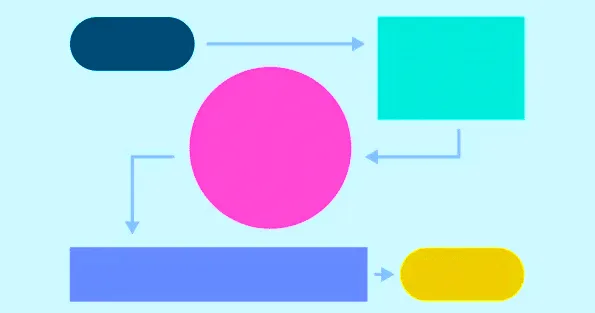A flow chart, also known as a process flow diagram, is a picture entailing the separate sequential steps of the process. It is more of a generic tool that can be customized for various purposes to describe a certain process, such as a service or administrative process in an office, a manufacturing processing plan in a manufacturing plant, or a project plan. It can be termed a basic quality tool or a process analysis tool because it helps assess the quality of a process by defining all the steps the process entails.

What are The Elements of a Flow Chart?
Most flow charts are made of several elements that make them wholesome and operational. The main elements of a flow chart are:
- Action Sequences- These are step-by-step details of the steps that make up a process.
- Inputs and Outputs- These are lists of all the services or materials entering or leaving the process
- Decisions- The commands that determine the flow of the sequence in the flowchart
- Time- A vivid outline of how long each step in the process takes and how long the entire process takes
- People- A list or an indication of the names or number of people that the entire process entails
- Process Measurements- This is a quantitative and qualitative analysis of the processes involved in the project
Various tools exist to help you design a flowchart, such as a flow chart template, books, and blogs on the internet. You can use any of those to help you go about the process correctly.
When Is a Flowchart Used?
The flowchart may be used for a variety of reasons, such as:
- When planning a project, to ensure that every step is included
- When documenting a process
- When studying a process for the aim of improving it
- When trying to increase the understanding of how a certain process is done
- When trying to communicate or explain to other people the steps entailed in a process
- When trying to improve communication between various people involved in a process
A flowchart can be designed at the beginning, middle, or end of a project, depending on its use. However, it is important to develop one before commencing a project to ensure that everything is included during the implementation of the process.
What Do You Need to Create A Flowchart?
You can design a flowchart from a wide variety of materials, depending on what you have at your disposal. Some of these materials include stick notes, cards, newspapers, or flipchart papers. You will also need a pen for writing and drawing.
During the process of creating a flowchart, you will:
- Begin by having a mind map of the process you want to detail in the flowchart. Having a mind map gives you an idea of what to include in the flowchart.
- Next, you will define the process you wish to diagram in the flowchart. You will come up with the title or name of the project and write it on top of the material you are using to design the flowchart.
- Defining the boundaries of the process. If you are in a team setting, you will have to discuss the boundaries with your teammates to develop a uniform process boundary.
- Brainstorming and listing the activities that make up each process
- Defining and creating a sequential order of all the processes involved
- Adding arrows to the diagram to show the flow of the entire process
- Reviewing the complete flowchart to determine whether or not the process is good
- Reviewing allows you to catch areas and processes you missed out on. It is also the stage where you and your teammates agree that the flowchart represents the entire process.
Final Thoughts
A flowchart is a sequential detailed analysis of a process that helps you go about a project without missing anything. It can be utilized in various areas, such as in offices, schools, construction sites, or manufacturing plans.



